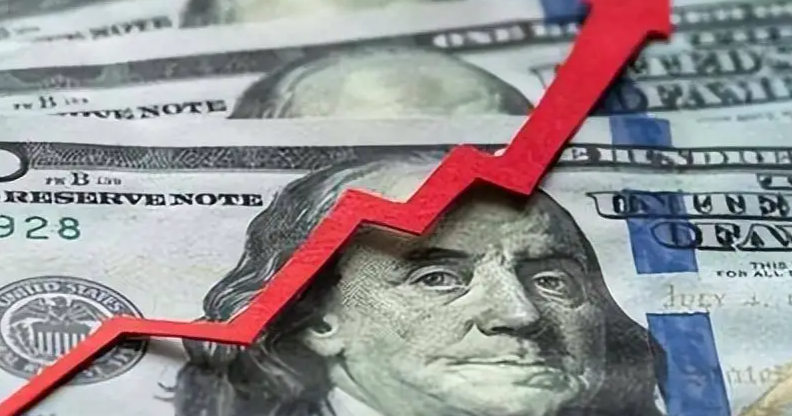NVIDIA: A Value Play Amidst Soaring Tech Stocks
Advertisements
In recent years, U.Stech stocks have consistently captured the attention of global investors, becoming a focal point for financial discussions and analysesAs these companies witness explosive growth, their market valuations soar, leading to intriguing dynamics on the stock marketA notable milestone was achieved when Broadcom, a significant player in semiconductor technology, joined the exclusive club of tech giants with a market value exceeding $1 trillion, expanding the elite group affectionately referred to as "BATMMAAN." This acronym encompasses eight major companies: Apple, Tesla, Microsoft, Meta, Alphabet, Amazon, Nvidia, and Broadcom.
The spotlight shines particularly bright on Nvidia, a company that has recorded substantial returns while maintaining a surprisingly low valuation relative to its peersIn 2024, Nvidia boasts an impressive 171% increase in share price, outperforming every other company in the BATMMAAN
According to market data, Nvidia's projected price-to-earnings (P/E) ratio stands at a mere 31 times its estimated earnings for 2024, suggesting that the stock is not excessively valued compared to its anticipated earnings growthAnalysts predict that Nvidia's earnings will surge by 52% in 2025, resulting in a PEG (Price/Earnings to Growth) ratio of 0.6, a metric indicating undervaluation.
To better understand the significance of the PEG ratio, it is essential to grasp its origins and implicationsInvented by renowned investor Jim Slater in the 1960s, the PEG ratio is calculated by dividing a company's anticipated P/E ratio by its estimated earnings growth rateA PEG ratio above 1 suggests that a stock might be overvalued, while a ratio below 1 indicates potential undervaluationThis concept emerged amid a complex investment environment, where investors required comprehensive metrics to evaluate stock valuations accurately
- Has the Bank Recovered From Its 60% Plunge?
- Is Oil's Reign Over as Energy Shifts?
- Markets Rethink Rate Cut Outlook
- Dollar Soars 9%, Index Hits Two-Year High
- US Debt Risks Global Economy
Slater's invention aimed to provide a more holistic view of stock value, factoring in earnings growth alongside market price.
Within the BATMMAAN group, Nvidia stands alone with a PEG ratio below 1, confirming its position as the most attractively priced stock among major technology firmsBroadcom, the next closest tech giant, carries a much higher PEG ratio of 2.3, indicating that while still valued comparatively lower, it does not offer the same bargain as NvidiaThe reasons behind Nvidia's low valuation, coupled with its high returns, primarily stem from its pivotal role in the artificial intelligence sector and the growing necessity for its graphics processing units (GPUs) across various domains, including deep learning and data centersThis growing demand is expected to accelerate Nvidia's performance and bolster its share price, resulting in optimistic market expectations for future earnings growth.
Comparatively, Tesla has also yielded remarkable earnings growth, expected to reach 37% in the forthcoming year; however, its projected P/E ratio of 121 inflates its PEG ratio to 3.2, the highest among BATMMAAN constituents
Tesla's elevated PEG speaks to its status as a leading player in the electric vehicle and renewable energy segmentsInvestors are eager to back its high growth potential, resulting in a willing acceptance of a premium valuationYet, the current profit levels are still deemed insufficient to justify such a high P/E ratio, reflecting investor optimism that might not be entirely founded on present performance.
Interestingly, Microsoft has stumbled in the current market climate, achieving only a 12% cumulative increase in 2024, making it the sole laggard in the BATMMAAN groupFurthermore, its PEG ratio of 2.3 points toward potential overvaluation, likely reflecting slower growth in its diversified business operationsMicrosoft's ventures into emerging fields have not garnered the same investor fervor as seen with its counterparts, leading to limited bullish sentiments regarding its traditional business earnings

Similar stories are mirrored in Alphabet and Meta, with PEG ratios of 1.8 and 1.9, respectivelyThe severe competition in the advertising market and struggles around innovation have suppressed their earnings growth and thereby influenced their overall market valuations.
Despite the potential concerns surrounding high valuations in certain stocks, it’s prudent to acknowledge that elevated P/E ratios don’t always translate into poor short-term performanceFor instance, reflecting on historical trends, the S&P 500 index rose 21% in 1999, even amidst warnings from analysts about excessive market valuations during the transition from 1998. During this era, the U.Seconomy was booming, and the tech industry was rapidly evolving alongside groundbreaking technological advances such as the internetSuch innovations drove corporate profitability and, consequently, market confidence, suggesting that a buoyant market sentiment can propel stock prices even above traditional valuation norms.
To encapsulate the ongoing evolution of tech stocks in the global landscape, Nvidia best illustrates the delicate interplay between potential growth, valuation metrics, and overall market sentiment
Leave a Comment